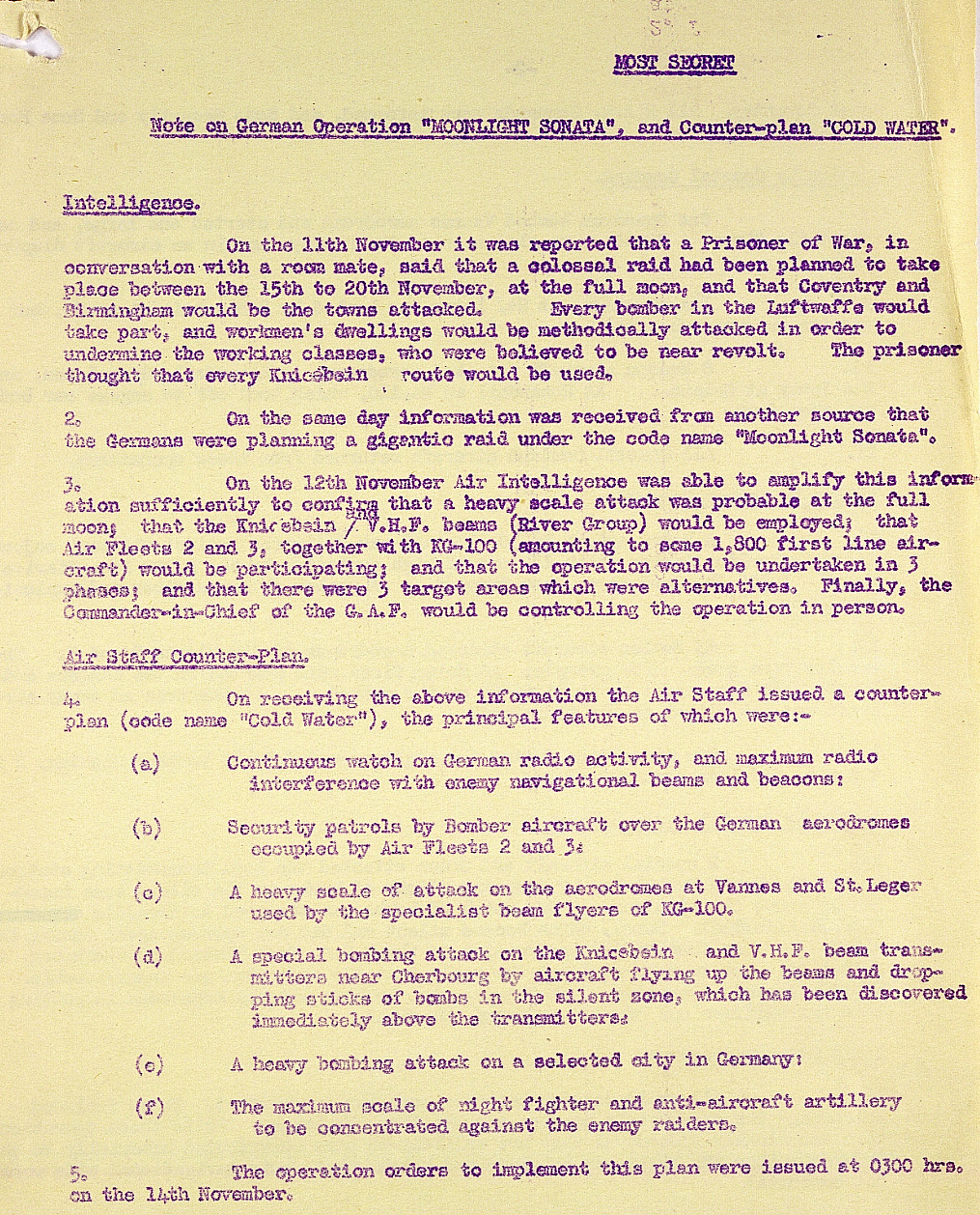
“Moonlight Sonata” and Operation “Cold Water” October-November 1940, Catalogue ref: AIR 2/5238
There were German plans for a massive bombing raid on Britain in November 1940 at the full moon. Read how the British government responded.
Transcript
MOST SECRET
Note on German Operation “Moonlight Sonata”, and Counter Plan “Cold Water”.
Intelligence
1. On the 11th November it was reported that a Prisoner of War, in conversation with a room mate, said that a colossal raid had been planned to take place between the 15th to 20th November, at the full moon, and that Coventry and Birmingham would be the towns attacked. Every bomber in the Luftwaffe would take part, and workmen’s dwellings would be methodically attacked in order to undermine the working classes, who were believed to be near revolt. The prisoner thought that every Knicebain route would be used.
2. On the same day information was received from another source that the Germans were planning a gigantic raid under the code name “Moonlight Sonata”.
3. On the 12th November Air Intelligence was able to amplify this information sufficiently to confirm that a heavy scale attack was probable at the full moon, that the Knicebain/V.H.P. beans (River Group) would be employed; that Air Fleets 2 & 3, together with KG-100 (amounting to some 1,800 first line aircraft) would be participating; and that the operation would be undertaken in 3 phases; and that there were 3 target areas which were alternatives. Finally the Commander-in-Chief of the G.A.F. would be controlling this operation in person.
Air Staff Counter-Plan
4. On receiving the above information the Air Staff issued a counter-plan (code name “Cold Water”), the principal features of which were:-
(a) Continuous watch on German radio activity, and maximum radio interference with enemy beams and beacons.
(b) Security patrols by bomber aircraft over the German aerodromes occupied by Air Fleets 2 & 3.
(c) A heavy scale of attack on the aerodromes at Vannon and St. Leger used by the specialist beam flyers of KG-100.
(d) A special bombing attack on the Knicebain and V.H.P. beam transmitters near Cherbourg by aircraft flying up the beams and dropping sticks of bombs in the silent zone, which has been discovered immediately above the transmitters.
(e) A heavy bombing attack on a selected city in Germany.
(f) The maximum scale of night fighters and anti-aircraft artillery to be concentrated against the enemy raiders.
5. The operation orders to implement this plan were issued at 0300 hrs on the 11th November.
